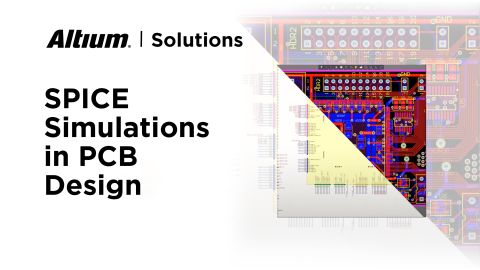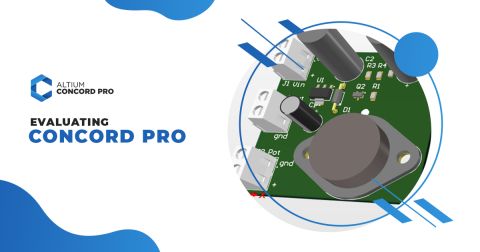Setting Up Concord Pro Revisions and Lifecycle

Altium Concord Pro™ as a standalone product and brand name has been discontinued and the capabilities are now available as part of our Altium enterprise solutions. Learn more here.
Precursor
To help PCB Designers to become better at what they do, there are various Blog series on Concord Pro which are presented in such a way that they are first broken into by categories. These categories walk through the entire process of efficiently using Concord Pro. At the end of each blog are practical steps you can take to get organized, and get the most out of Concord Pro for your PCB projects.
Introduction
We are continuing to set up Concord Pro with a focus toward Revision and Lifecycle Schemes. We are now getting the foundation set up for what we are going to build on in the future. I recently heard a story here in San Diego that a brand new housing development in the area was finding that many of the houses were collapsing because the foundations were cracking. Here, you have this huge and expensive home disintegrating simply because of its foundation. In the same way, what we are setting up here with the Revision and Lifecycle scheme is what we intend to build upon the future.
Revision Schemes
Before anything else, some advice. The revisions and lifecycle are an area that takes some planning.
 Norman Vincent Peale once said, “Plan your work - work your plan. Lack of a system produces that ‘I’m swamped’ feeling.
Norman Vincent Peale once said, “Plan your work - work your plan. Lack of a system produces that ‘I’m swamped’ feeling.
That is some excellent advice, and a primary reason for so many false starts, and frankly, so many failures. This was the area that we struggled with the most when we were setting up our Data Management system. Once you begin to use a revision or lifecycle scheme, it is difficult to shift gears in midstream, as we will see. So, plan it out.
It used to be that Concord Pro was primarily for components, but now it has gone far beyond that. With the ability to store and manage many other items, including your various templates, projects, even PDF documents (which we used to create a research library for our designers), not everything will have the same revision scheme. Concord Pro is so powerful that it can handle any revision scheme you’d want to set up. And it easily connects those revision schemes to lifecycles. For us, in this blog, we will concentrate on the components to get ready for the next steps in setting up our library.
Revisioning is the process of managing different drafts and versions of documents or items. As changes occur on items in the library, various versions are controlled to document the history, which then can be easily referred to if needed.
For our components, we can use a “simple revisioning scheme”. Meaning that with each change on either a component or the items attached to it, the revision is cycled up to the next numeric.
Creating a New Revision Scheme
Before you jump in and start creating your own Revision schemes, Altium has preloaded Concord Pro with some phenomenal revisions plans that are out of the box ready.
Go to your System Preferences>Data Management>Servers>Properties. You will find the Naming Scheme. Concord Pro is straightforward to use. In a few clicks, you can create a brand-new scheme. You can set up any number of levels in which the revision is either numeric, alphabetical, or a combination of both.
Another tip here is that it’s best to try to follow the revision scheme being used in your PLM system. One of the significant features of Concord Pro is the ability to integrate your components into your PLM, and it would be essential to use the same revision scheme so there is no confusion later.

Adding Content-Type
I have been using Altium for many years. I can say that Altium has always placed levels of protection in their software levels to simplify the design process and reduce user errors. One way this is done is by standardizing set ups, such as your revisioning. An additional step when setting up your revision scheme is to do the Content-Type. Although you can assign the same item to different revision schemes, it is NOT advised to do that. It is best to use a single revision per item on this list. This becomes a standard when you create an item to use the same scheme.
You will find that if that rule is violated, Concord will show that you have multiple revision schemes for a single item when it checks on your system setup using its “Health Monitor” .
Lifecycle
Once we begin adding components and building up our library, those components begin the march toward deprecation, and finally to obsoletion. Think about that. Every component ultimately becomes obsolete. But not before going through a standard lifecycle. Both internally and externally, when a component is placed in your library, it begins an internal lifecycle and starts with a NEW state. You should have a review process for the new component in place. Once it has been verified, the lifecycle moves up to the next state — let’s say RELEASED. But then you make some changes to that component; what happens? Well, the revision level is first bumped up to the next level, and the Lifecycle state goes back to NEW. Why? Any changes done on a component must be verified. All these processes are internal. The external process is the deprecation of the component by the MFG. That component could sit and be used for some time until you begin to see that it is going to End-of-Life. That is when you would go in and change the state of the component to the next state.
Just an added note here: a great tool for monitoring the external states of your components is ActiveBOM. I would highly recommend using it. If you have any questions on ActiveBOM, just get with an Altium representative.

Creating a New Lifecycle
Before creating a new Lifecycle, just like our revision schemes, Altium has preloaded Concord Pro with several ready-to-use lifecycles so you may not need to create a new one.
Once again, at the same spot: System Preferences > Data Management > Servers > Properties > Lifecycles.
The real question you need to ask here is how much organization you would like. Concord Pro has so much to offer that, really, it is only the limit of your imagination that would restrict this.
With a combination of Lifecycle, Automatic revisioning, and even approvals thrown into the mix for good measure. You can set up your lifecycle for anything. The Lifecycle I decided to show was a standard component lifecycle—both internal and external checks.

Adding Content-Type
Just like the revision scheme, you can also set up specific items to use a particular scheme of the life cycle. Make sure you only have a single Lifecycle per item.

Conclusion
Try not to get overwhelmed with the set up process; this is something that is usually done just once at the beginning. After that, the only thing is maintenance. Someone recently asked me how long it took me to set up our library. I said, “I don’t know, I’m not done with it yet.” Which is always true. There is no finish line once you start this. You simply lay the foundation and you start building on it, and you keep building.
Practical Steps
- Determine the items that you will want in Concord Pro (Suggest starting with your components)
- Determine if there is a Revision Scheme already preloaded to use.
- For practice, create a New revision scheme.
- The revision scheme creates your content type.
- In Lifecycle, determine if there is a Lifecycle scheme already preloaded to use.
- For Practice create a New Lifecycle Scheme
- Lifecycle Create your content type for them.
Would you like to find out more about how Altium can help you with your next PCB design? Talk to an expert at Altium and learn more about making design decisions with ease and confidence.









